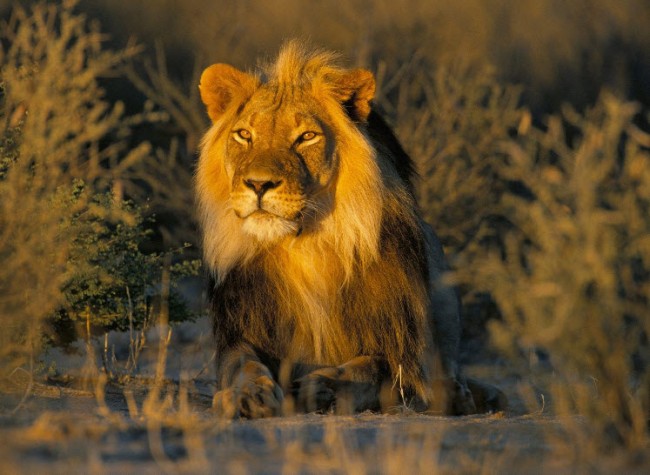Added by Jillian Moyet on September 10, 2014.

Lions in India are dying off at an unusually high rate. The number of Asiatic lions is currently at the low number of 411. In Gir, 256 lions have died just in the past five years.
As with many species, human expansion has affected the Asiatic lions’ ability to thrive. The lions have outgrown their sanctuary in Gir and moved beyond its borders, encroaching on human settlements and making new homes around human beings. The spread of the lions has affected their growth. Twenty percent of India’s lions are the victims of deadly accidents. Some have been hit by cars or trains, while other lions fall into the open wells found on farms.
Poachers are another concern for these large cats, as are other illegal activities. Reportedly, the illegal mining of sand and limestone has affected the lions’ habitat. The lack of available water has caused them to move toward the coast, away from the forested areas where they are supposed to make their homes. This migration sends the lions into human territory as they look for better places to make their territories. Environmentalist Takhubhai Sansur called the region the lions frequent a “death field” due to the dangers there that are taking out the big cats.
On Wednesday, a dead male lion was discovered in India’s Girnar Wildlife Sanctuary. The preliminary investigation has led to a possibility of human involvement. Lack of pugmarks around the area suggested the body had been dumped there, not died there. However, more information will be made available after completion of the autopsy. Currently, three teams have been put together to hunt for evidence regarding the suspicious death.
Another case of death is even more heart-breaking: that of a cub showing a Gir sanctuary guard the corpse of its mother. In this case, natural causes are most likely, possibly death by other animals. The cub will now be watched carefully, as lion cubs are virtually helpless on their own. Fortunately, lions in Gir are said to have little trouble with their human caretakers. With life hard enough in the wild, the lions hardly need more, human-made troubles.
The troubles are numerous, as humans and lions struggle to occupy the same land. Farmers lose their cattle as the cats sneak onto their property to hunt, forcing the government to reimburse those who have lost livestock. Human lives can be impacted: 114 people were wounded and 14 people killed due to lions in just the last two years.
The current Prime Minister, Narendra Modi, opposed the relocation of the lions, although this plan was intended to prevent further drops in their numbers. Some have asserted that his decision was politically motivated and that he kept the lions in their current situation to gain votes. The lions would have been moved to the Kuno Palpur Sanctuary in central India, away from the coast.
The Indian government has been accused of secrecy regarding the lions’ deaths, especially since autopsy reports have not been released publicly. Harish Joshi, an activist for Indian wildlife, claimed the government is “alarmed” by the number of deaths and is therefore being dishonest about what is actually affecting the species.
In the early part of the 1900s, lions were hunted to near extinction in India, until Nawab Mahabat Khanji banned the hunting of the Asiatic lion to protect the big cats. Since then their numbers have gone up, but they are still currently considered “critically endangered.”
With the alarming rate of lion deaths in India, the species will have to rely on its human neighbors to protect them. Currently, half the funds allotted for wildlife are spent on Asiatic lions.
source
No comments:
Post a Comment